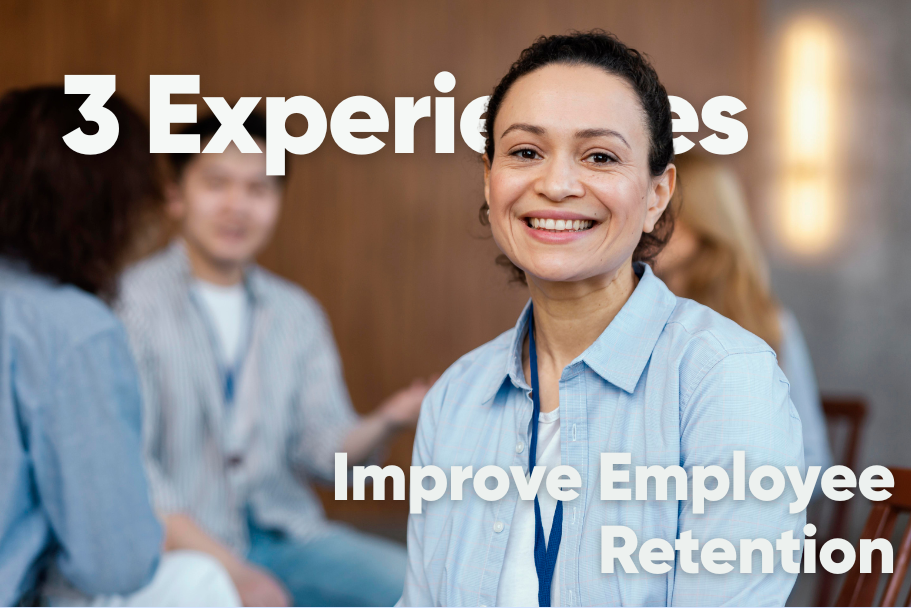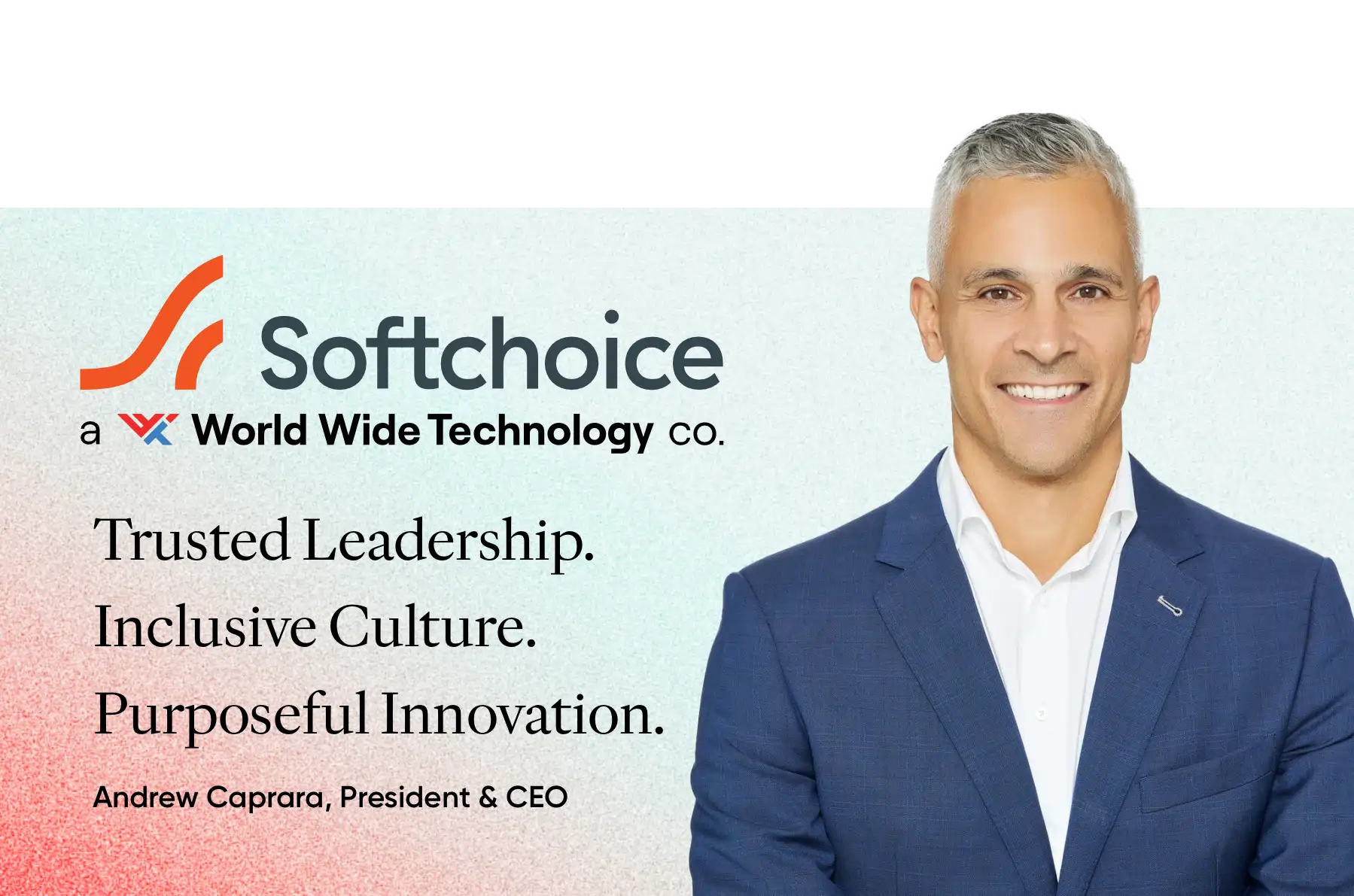Jacq Hixson-Vulpe, Coordinator, LGBT Inclusion Index, Pride at Work Canada
DOWNLOAD YOUR FREE COPY OF THE FULL LGBT EMPLOYER GUIDE
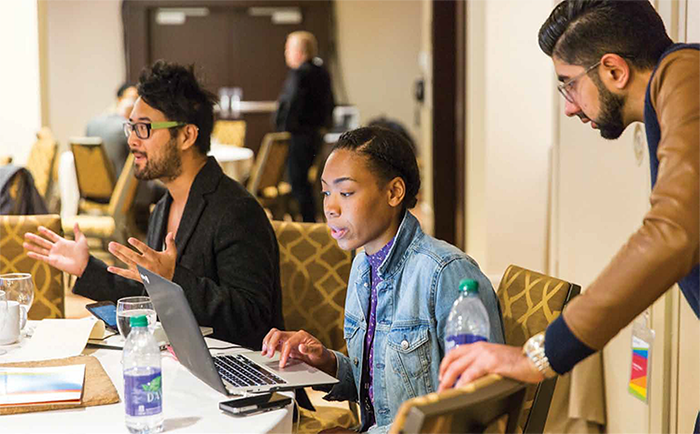
Workplace diversity is the new normal. Business leaders everywhere recognize diversity in all its forms as a competitive advantage. Diverse perspectives drive creativity, innovation and foster a feeling among employees that their opinion matters, which encourages them to give their best effort and stick around.
And it seems that business leaders are putting this belief into practice. The vast majority of Canadian workplaces are representative of the communities in which they operate, have a formal diversity committee—with access to a budget—as well as an executive champion to drive this agenda forward.
Despite this overwhelming strategic focus on diversity, many Canadian organizations are still reporting that, while overt racism, sexism and homophobia is not as prevalent as it was a decade ago, diversity in workplaces has not yet translated into true inclusiveness.
Diversity in itself does not create inclusion—an inclusive environment must be intentionally designed, nurtured and supported.
At our research and consulting firm, Great Place to Work®, we have been studying great workplaces and exploring issues around high-trust, high-performing cultures for over 25 years. Our research indicates that the more consistently all people in an organization consider their workplace great, the more that company gets a leg up on rivals in areas including growth, retention and extra effort. The more employees of diverse backgrounds feel they can speak up and make honest mistakes—elements of a high-trust culture—the more likely innovation efforts are to succeed.
This disconnect between diversity and inclusion is experienced by women, aboriginal people and ethnic minorities, but it is especially marked for the LGBT (Lesbian, Gay, Bisexual, and Trans) community.
Despite great progress in the last decade, homophobia and transphobia still exist in the workplace and remain under represented in diversity and inclusion conversations.
Most organizations want to do the right thing when it comes to supporting LGBT employees in the workplace, but might not fully understand the challenges faced by these populations or their ethical and legal obligations to support them in the workplace. Our research findings highlight that many organizations have made strides in relation to diversity based on sexual orientation, but more support is needed for employees with diverse gender identities and expressions.
Great Place to Work® has partnered with Pride at Work Canada to help employers better understand LGBT communities and build workplaces that harness their employees’ full potential. Canadian workplaces have come a long way in the last few decades but there are additional steps that need to be taken to expand the inclusion circle to other marginalized groups.
The LGBT Best Practice Guide for Employers is a practical tool to help organizations develop more LGBT inclusive workplaces, focusing on and sharing the best practices great Canadian organizations, of all structures and sizes, have found to be instrumental in building an inclusive workforce. This guide will help drive the conversation around inclusive policies & programs that are changing the way Canadian workplaces operate.
Top 5 Strategies to Promote Inclusion of LGBT People in the Workplace
1. Put it in Writing!
If you want to show you are serious about tackling all forms of discrimination in your organization, it is essential that you have a formal policy outlining your position and the expected behaviors of all people in your employ.
Policies should be made easily accessible through intranet sites or all staff communications, and should set out roles and responsibilities for compliance. These policies support employees’ understanding of what type of behavior is inappropriate, while communicating that these issues are taken seriously. Not only is this important in terms of communicating your organization’s support of LGBT employees, it is also required by human rights legislation across Canada.

2. Implement Organization-Wide Diversity Training
To ensure your organization’s diversity and inclusion work is implemented in a holistic fashion, it is important to provide related training to all employees. Organization-wide training should include a review of discrimination and harassment policies, education in the use of respectful (vs. harmful) language, and detail how your organization will support an employee who has experienced and/or witnessed discrimination and/or harassment.
Training should be reinforced with appropriate behaviors modelled at all levels of the organization (especially the leadership level) to ensure your initiatives are embedded in the day-to-day functioning of the organization.
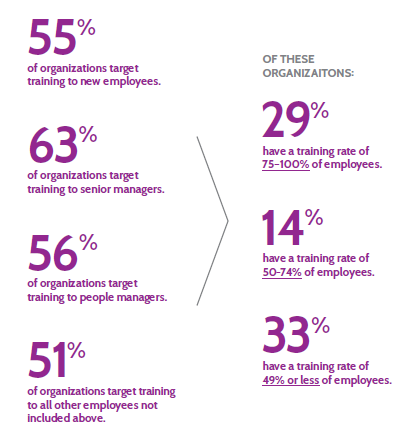
3. You Can’t Change What You Don’t Measure
Implementing policies and programs that support workplace inclusion is part of a larger process, which requires understanding and evaluation. Collecting workplace demographics related to sexual orientation and gender identity can help an organization understand the personal characteristic of employees and whether these have any impact on measures such as retention rates, promotions, rewards and recognition.
Before asking employees to share this personal data, it is essential to communicate that the process is voluntary, confidential and the information they share will not be used against them in any way. Many organizations believe it is illegal to collect data around employee’s sexual orientation; this is a myth. As long as the employer collects data in a voluntary way, ensures confidentiality and states how the data will be used, there is no risk posed to the employer.
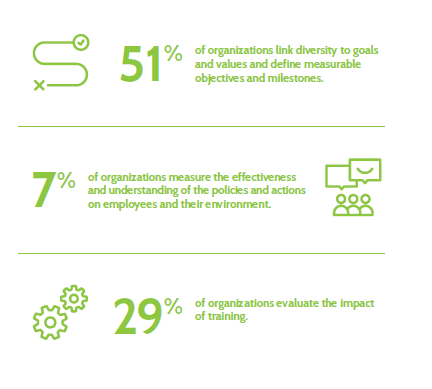
4. It Starts at the Top
There is no such thing as an inclusive workplace without an inclusive leadership team. Regardless of the policies and programs an organization has in place, inclusion efforts will fall flat if this behavior is not modelled at the most senior level.
Many organizations evaluate inclusivity on an organizational level by reviewing new hires, promotions, pay and recognition by aggregate employee demographics. An increasing number of organizations now look at the inclusivity of individual leaders as part of their balanced scorecard review. This might include looking at each leader’s efforts to promote inclusion within their team and creating equal opportunities for all team members.
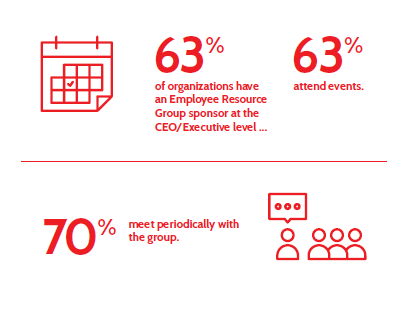
5. Put Your Money Where Your Mouth Is
The best way to show support for diversity and inclusion is to make it part of your organizational structure, and this includes providing a budget. This shows that your organization recognizes the business and social value of fostering an inclusive workplace. Financial support for training ensures everyone in your organization is aware of your organizational commitment to creating an inclusive workplace.
Financial support for ERGs encourages inclusive social events and initiatives. Financial support for inclusive benefits helps LGBT people feel valued and cared for in the workplace.
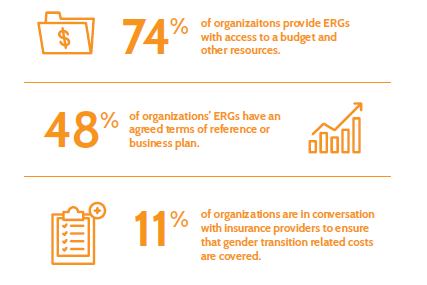
DOWNLOAD YOUR FREE COPY OF THE FULL LGBT EMPLOYER GUIDE
Getting There Together
The practices highlighted in this Employer Guide reflect the collective efforts of many individuals and organizations committed to advancing fairness for LGBT people in the workplace. There is no “one size fits all” solution to creating an inclusive workplace—each organization must find its own way. But whether you have been working on diversity and inclusiveness for some time, or are just starting the journey, we hope this collection of best practices will inspire you to do more to ensure a great place to work “for all” in your organization.
Diversity and inclusion is a holistic endeavour that requires us to recognize people as whole and complicated beings and recognize the systems that impact people’s ability to thrive and live authentically in this world. Continuing this work - through connection with others - helps ensure that it is meaningful, impactful, and creates a sense of belonging for all employees. Not only is this good for business, it’s good for people.

